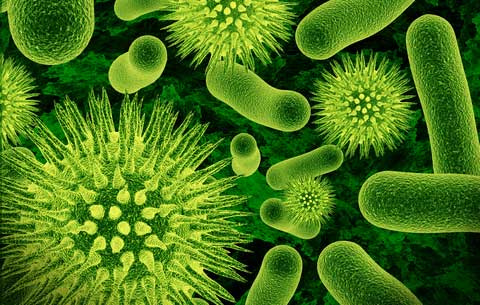Fear: Hobbyists Will Create New Life Forms

Amateur biologists are goofing around with genetics in garage-based labs that some fear could unleash new and dangerous life forms.
The new effort, dubbed biohacking, harkens to revolutions in infotech hatched by individuals that founded Apple, Hewlett Packard and Google.
While, individual kitchen-counter chemists may become biohackers, the field has already become organized: One of the more serious examples is a community lab set up by a Cambridge, Mass. group called DIYbio (do-it-yourself biology). Co-founder Mackenzie Cowell said amateurs might do things as diverse as creating new vaccines to using squid genes to make tattoos that glow.
"We should try to make science more sexy and more fun and more like a game," Cowell said in an Associated Press story.
Some worry things could get out of control, with dangerous organisms escaping a lab.
"Once you move to people working in their garage or other informal location, there's no safety process in place," said Jim Thomas of ETC Group, a biotechnology watchdog.
At the root of biohacking is the field of synthetic biology, which is not new. For years, researchers have been trying to engineer and build or redesign living organisms, such as bacteria, to carry out specific functions. The field is a scientific playground for the genetic code, where previously nonexistent DNA is formulated in test tubes. The promise is that the novel organisms will fight disease, create alternative fuels or build living computers.
Sign up for the Live Science daily newsletter now
Get the world’s most fascinating discoveries delivered straight to your inbox.
The field "is potentially controversial because it raises issues of ownership, misuse, unintended consequences and accidental release," according to a report earlier this year commissioned by the Biotechnology and Biological Sciences Research Council in England.
<script type="text/javascript" language="javascript" src="http://static.polldaddy.com/p/1229004.js"></script><noscript> <a href ="http://answers.polldaddy.com/poll/1229004/" >Is biohacking good or evil?</a> <br/> <span style="font-size:9px;"> (<a href ="http://www.polldaddy.com"> polls</a>)</span></noscript>
Meanwhile, research on the professional side has made great strides. Scientists last year took a big step toward creating artificial life with the successful transplant of genetic material from one microbe species into the cellular body of another.
"It's equivalent to converting a Macintosh computer to a PC by inserting a new piece of software," said J. Craig Venter, who leads the J. Craig Venter Institute in Maryland where the research was conducted.
Venter's life story will resonate with the new garage-based biotinkerers. He is known for setting up his own company that raced a government effort to fully sequence the first human genome.
Venter's team aims to create artificial life with lab-crafted genomes.
Also on the horizon: Cybrids. A British group plans to "inject human DNA into empty eggs from cows, to create embryos known as cytoplasmic hybrids that are 99.9 per cent human in genetic terms," according to an article earlier this year in The Times of London.
The approach at DIYbio sounds downright fun. The group started by showing amateurs how to extract DNA and do genetic fingerprinting using the kitchen sink and stuff around the house.
Cowell and his colleagues see their effort as one to democratize science.
"It shows you how much science can be about duct tape and having a few screws in the right place," Cowell said in a Boston Globe article in September. "It shatters that clinical image."
- Americans Clueless About Plans to Create New Life Forms
- The Freakiest Lab Animals
Robert Roy Britt is the Editorial Director of Imaginova. In this column, The Water Cooler, he takes a daily look at what people are talking about in the world of science and beyond.
Robert is an independent health and science journalist and writer based in Phoenix, Arizona. He is a former editor-in-chief of Live Science with over 20 years of experience as a reporter and editor. He has worked on websites such as Space.com and Tom's Guide, and is a contributor on Medium, covering how we age and how to optimize the mind and body through time. He has a journalism degree from Humboldt State University in California.











